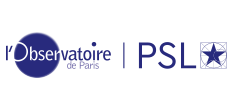MIDI combines light from the VLTI: the start of 10 μm interferometry at ESO
Résumé
When at the beginning of November 2002 the MIDI containers were opened up in Paranal and the team members together with ESO personnel started to assemble the instrument in the VLTI interferometric laboratory, nobody could be completely sure that their ambitious goal could actually be achieved: to bring together for the first time two beams of light from distant giant telescopes at the wavelength of 10 microns and obtaining stable, repeatable and accurate interference fringes. Although the instrument had been designed and built with the utmost care and all laboratory tests in Europe indicated that all specifications were met, going to the sky was another matter. The thermal infrared covers the wavelength range around the peak of the natural emission of a black body with a temperature about 300 K. This is close to the ambient temperature of the telescope mirrors and structure, of the two dozens of mirrors (in each arm) needed to bring the light into the tunnel and the interferometric lab, of all the mechanic structures, and of course of the sky. Therefore, at the wavelengths to which MIDI is sensitive, everything glows brightly! There is no distinction between day and night, and even the brightest stars are just tiny speckles of light in an overwhelmingly bright background. For this reason, previous attempts to perform interferometry in the thermal infrared had to find other ways to combine the light (for example, like Bester et al. (1990), in the style of radiointerferometers, thereby however sacrificing sensitivity), or never achieved a real routine operation. Even the ambitious efforts being carried out at the Keck Interferometer, in spite of having started earlier than at ESO, are so far still confronted with difficulties in this special area.

